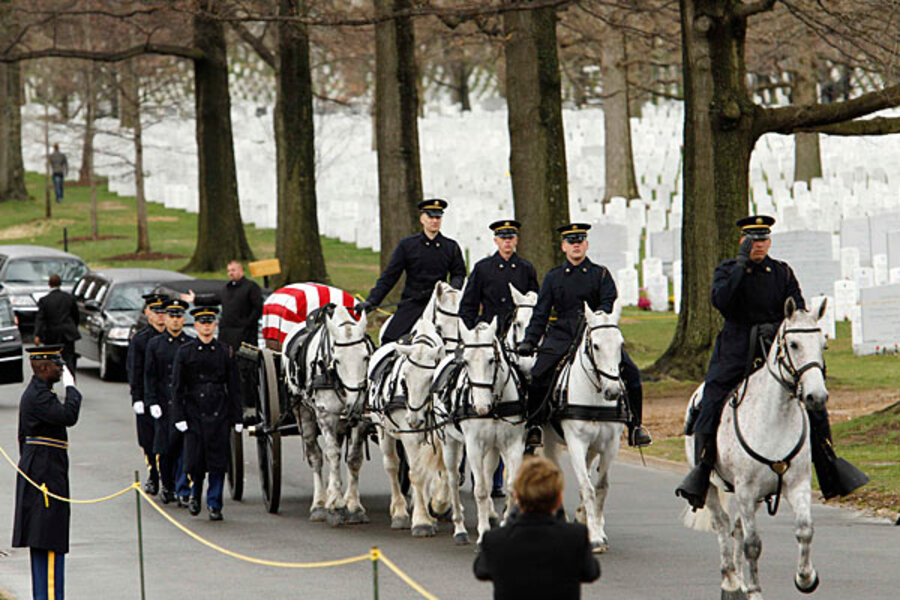Presidential debate 101: Does US military still use horses and bayonets?
Loading...
Does the US military still use horses and bayonets?
This question arises because of President Obama’s riposte against Mitt Romney on defense budgets in Monday night’s presidential debate. At one point Romney charged that the US Navy is now smaller than at any time since 1916. Obama came back with a smooth and perhaps pre-planned zinger.
“You mentioned the Navy ... and that we have fewer ships than we did in 1916. Well, Governor, we also have fewer horses and bayonets, because the nature of the military’s changed.”
The phrase “horses and bayonets” subsequently spawned a flood of tweets, as “binders full of women” did in the second candidate face-off. But as the descendent of one of the nation’s last horse cavalry commanders, this Decoder writer wonders about the accuracy of Obama’s words. He said the US has “fewer” horses and bayonets, not “none.” Is that accurate? If so, where are these things now?
Well, the bayonet thing is easy to elucidate. The Marines and the Army both still issue rifle-mounted knives to serve as hand weapons, utility knives, saws, and all-around handy items.
Bayonet training is an integral part of the Marine Corps Martial Arts Program, which every recruit must pass. During such training, recruits fix OKC-3S bayonets underneath the muzzles of their rifles, effectively turning it into a spear. They’re taught thrusts, jabs, and slashes, according to a Marine public affairs account of such training. They then must use these techniques on a dummy-filled course intended to simulate close combat.
As for horses, there’s still at least one equestrian unit in the US Army. That’s the Caisson Platoon of the 3rd US Infantry, “The Old Guard.”
The Old Guard represents the Army in ceremonies throughout the Washington region and the nation at large. They’re the soldiers visitors see at Arlington National Cemetery and in presidential inaugural parades.
The Caisson Platoon uses horses for the solemn purpose of pulling caissons carrying caskets toward interment at Arlington. They also long performed in popular historic pageants such as the “Twilight Tattoo.”
A more recent use of these horses is to provide therapy for soldiers hurt in battle or suffering from post-traumatic stress disorder. Since 2006, the Therapeutic Riding Program has used Old Guard soldiers and horses in once-a-week riding lessons for wounded warriors at a barn a few minutes from northern Virginia’s Fort Belvoir Community Hospital.
Old Army horses don’t just fade away, in case you’re wondering. The Old Guard offers up some Caisson Platoon veterans for adoption at the end of their careers. Currently a 17-year old gray Quarter Horse named Clyde is looking for a retirement home, for instance. So is Omar, a 21-year old black Standard Bred.
The Army keeps another batch of horses stabled near Fort Bragg, N.C., to help train Special Forces troops who might have to ride through rough territory. Horse-mounted US commandos played a pivotal role in the toppling of the Taliban-led government in Afghanistan in 2001.








